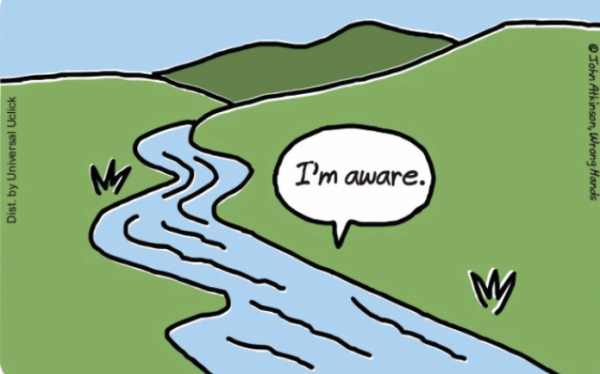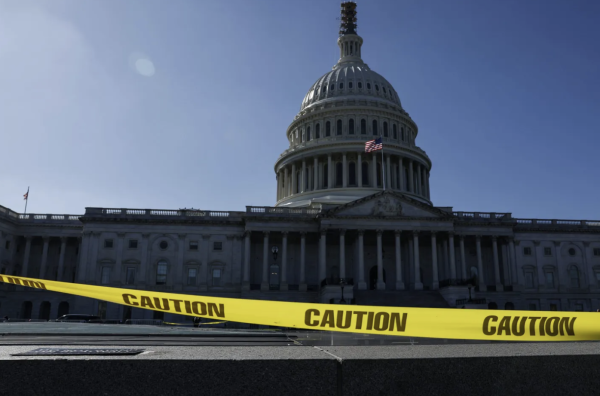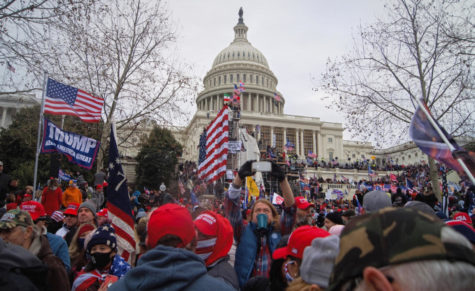Trump’s Wall: Reinforcing Social Divides with Concrete Dividers
Five billion dollars. Imagine what you could do with that money—Would you buy a couple mansions with bowling alleys, movie theaters, and twelve-car garages like 21 Savage? Provide clean water to every developing country? Create free health clinics in every major city? Five billion dollars could send everyone in America to college for free for 100 years. Five billion dollars is also the amount of money Trump wants to build his wall. A wall separating those in need of safety from their safe haven, separating families, separating social groups, separating communities—essentially separating the land of the free from freedom.
On December 22nd, 2018, the U.S. government shut down due to the president’s inability to come to a conclusion with Congress about building a wall between the United States and Mexico. This government shutdown is now the longest in history, surpassing the 21-day shutdown in 1995. 800,000 government workers are missing paychecks, and even though they will be getting paid at the end of the shutdown, many are missing payments on their homes, cars, and insurance. 380,000 government workers have been placed on unpaid leave, being apparently “nonessential” to the government. Taxpayer money is being wasted on lost revenue, expenses associated with planning for and executing a shutdown, and penalties the government earns for not making payments to vendors while the government is closed. Donald Trump is effectively putting people at risk in order to salvage a chance at being reelected, to follow through with his primary campaign promise. He acts like a toddler throwing a temper tantrum, refusing to give in solely because he wants to go down in history as the president who built the wall. Doesn’t he realize that the wall isn’t going to stop people from illegally entering the states? Doesn’t he realize that the only thing this wall will separate our country from is peace?
America is seen as a progressive, powerful nation, but our politicians use this image as a cover to hide the long history of broken practices that still grip our nation to this day. The idea of criminalizing minority groups has existed since far before the birth of our nation. Attaching these criminal stereotypes to groups of people not only reinforces social hierarchy, but also economically benefits the government and those in power. A major example of this criminalization is the slave trade in the 17th and 18th centuries. The benefits of slavery—free labor and profit, to name a few—greatly outweighed the disadvantages, therefore politicians felt the need to justify the continuation of this trade. Their justification? That these slaves were criminals and therefore less than human. 150 years later came the end of slavery—the 13th amendment. But, instead of abolishing slavery altogether, the politicians left a loophole. The amendment claims that people in the United States cannot be enslaved EXCEPT for criminals… thus leading to the birth of mass incarceration. The government was struggling to rebuild its economy after the Civil War without the help of free labor, so naturally, there was a major increase of arrests for petty crimes, almost all targeted to people of color. Propaganda was spread around the nation that these former slaves were criminals and that the country was safer if they were locked up. This not only led to people of color being accused of crimes they didn’t commit, but also provoked years of lynching that lasted until the mid 20th century. Why did the politicians do this, you ask? To generate more money for the economy to circulate, and to utilize people of color for manual labor.
Today, many issues of the same nature have gripped the nation, stemming from the rise of mass incarceration in the 1860s. The government labeling immigrants as criminals, attaching stereotypes to Central Americans for drugs and gang violence, claiming all Muslims to be terrorists—it all creates a fear in the minds of our people that these politicians and large corporations can benefit from. Politicians such as Richard Nixon, Ronald Reagan, and Bill Clinton have used this tactic as well, emphasizing “law and order” but smothering the motivation behind it. George Bush even started a whole “War on Drugs” in order to justify the mass incarceration of black and Hispanic people, all for the benefits that come with having people in prison. Donald Trump’s campaign has especially reinforced this fear and essentially relies on it. His biggest campaign promise that supports this? The wall.
Here’s what Trump doesn’t realize about his plan: Undocumented immigrants will still find ways across the border whether or not there’s a barrier. The wall will be completely irrelevant to those overstaying their visas inside the borders and therefore becoming illegal immigrants. It will not stop drug smugglers, who Trump accused of exporting illegal substances to the U.S. through the Mexican government (the smugglers aren’t even all Mexican; U.S. soldiers have just been caught smuggling one million dollars’ worth of cocaine from Colombia aboard a military plane). In addition, the building of the wall would increase the crime rate as well as police brutality, and would significantly and negatively affect the U.S. economy. Not only would the wall physically affect our country, though, but it would also impact us socially in a way that could place us far behind in terms of social equality.
This wall is a symbol for everything we haven’t accomplished as a nation. It reinforces social divisions with literal concrete dividers, solidifying the continuation of segregation in our country. It represents the neglection of internal conflicts by the shift of focus outwards. It represents our country’s foundation: genocide and racism. But, most importantly, it represents just how much our government values wealth and power over actual human dignity, something that needs to change before we can move forward and surpass these social barriers. I mean, to quote our beloved president himself, “If there’s a concrete wall in front of you, go through it. Go over it. Go around it. But get to the other side of that wall.”




